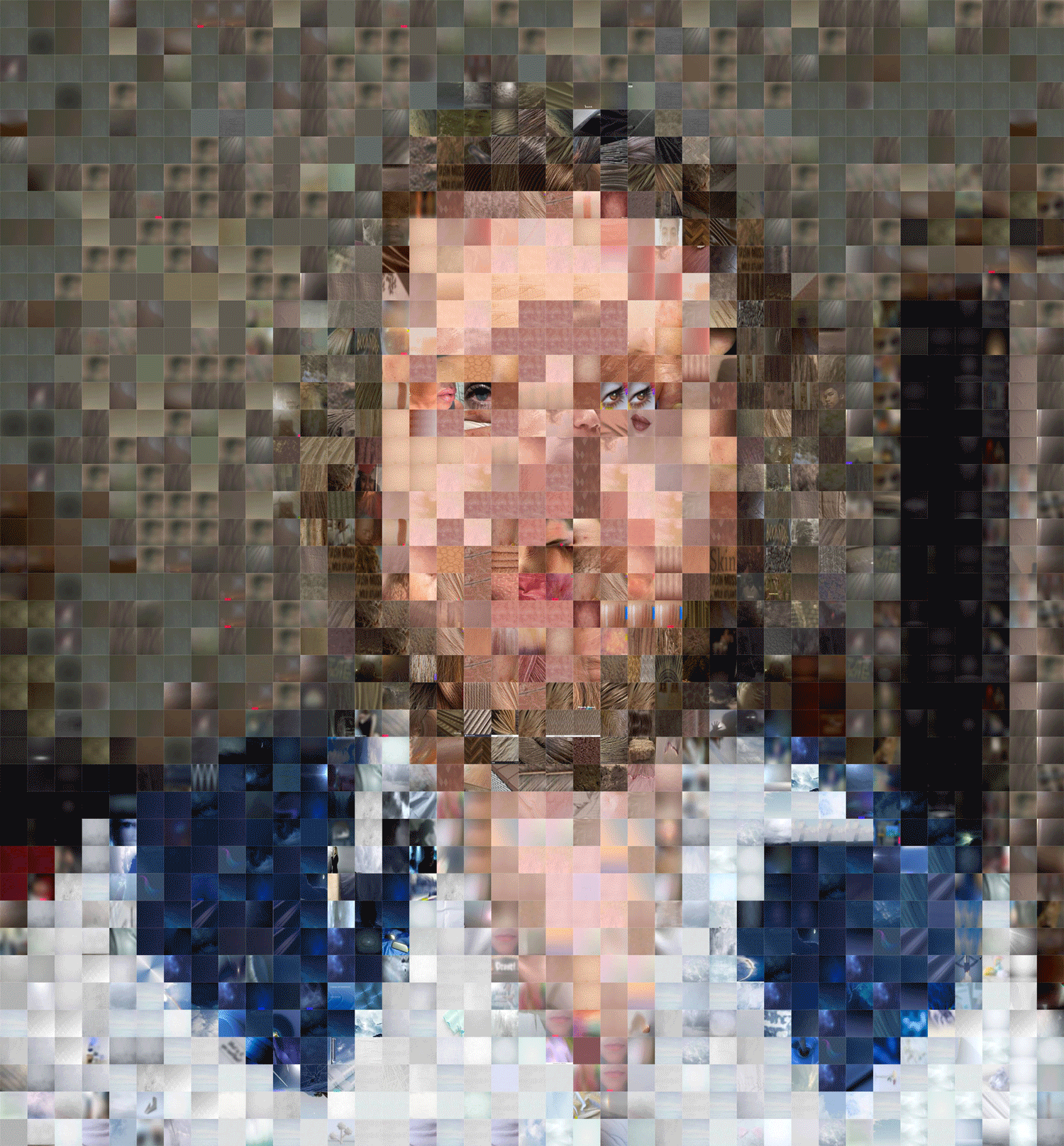Myself When I am Not Real
2020 - Digital Work
An ongoing work, Myself When I am Not Real is a series of self-portraits, broken into quadrants, with the top Google reverse image search results replacing each quadrant. The reverse-image mosaics form a set of abstract renderings that, when put together, oscillate to obscure and change (while still revealing) the form within. Inspired in part by our disconnected lives playing out in Covid-19 quarantine amidst the box squares of Zoom, FaceTime, Google Hangouts, etc., Myself When I am Not Real is meant to explore the disquieting isolation inherent in ongoing socialization within virtual space.
In the parable of the blind men and the elephant, differing lenses of reality are probed based on a finite data set. Myself When I am Not Real responds: what am I when viewed through the omni-sight of machine intelligence? Who are we when parsed through the semi-intelligent and burgeoning data-streams of machine learning? The pixels that represent us amidst the new reality reveal a strange miasma of information when collected, expanded, and oscillated. Artificial intelligence will be able to parse 'the whole elephant' and beyond, resulting in an understanding of reality that will aggregate amounts of information we can scarcely comprehend. This piece wonders what would 'the elephant' be if one processed its entirety through adaptive learning of a near infinite data source.
The first of these portrait collections utilized 150 by 150 pixel squares, manually searched and catalogued into five oscillating images. While the images produced are wholly unique, they obscure the form into portraits so abstract as to lose the form within.
The second collection took a more ambitious dataset, using 40 by 40 pixel squares - clocking in at 1,224 automated SERP (search engine results page) scrapes and 12,240 images in 10 oscillating layers. Though the portrait form retains, the edges and contours of the subject are only just able to be surmised.
The third collection used a much larger and more high quality image as its base. Broken into 70 by 70 pixel squares, the 15 portraits are comprised of 24,570 images from over 1,600 SERP scrapes. The resulting portraits are very high quality for printing and gallery exhibition.
Future areas of exploration of this series will focus on further automation of the processes to arrange the SERP image scrapes, with the goal of a fully autonomous render package for images.











